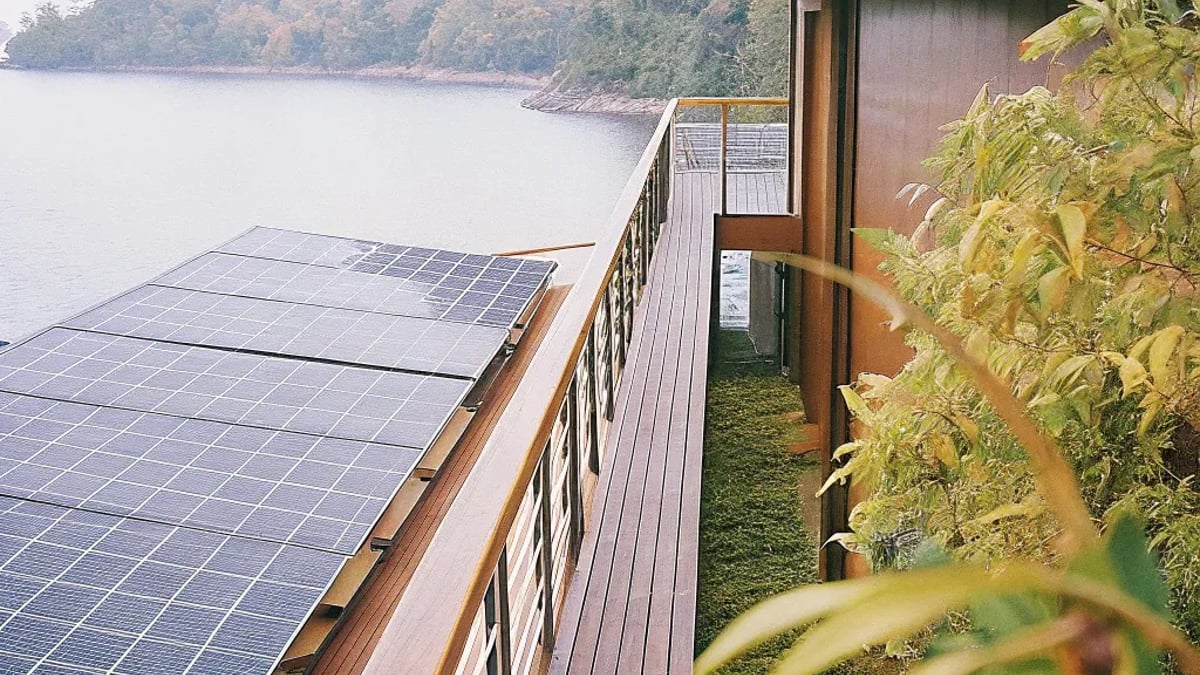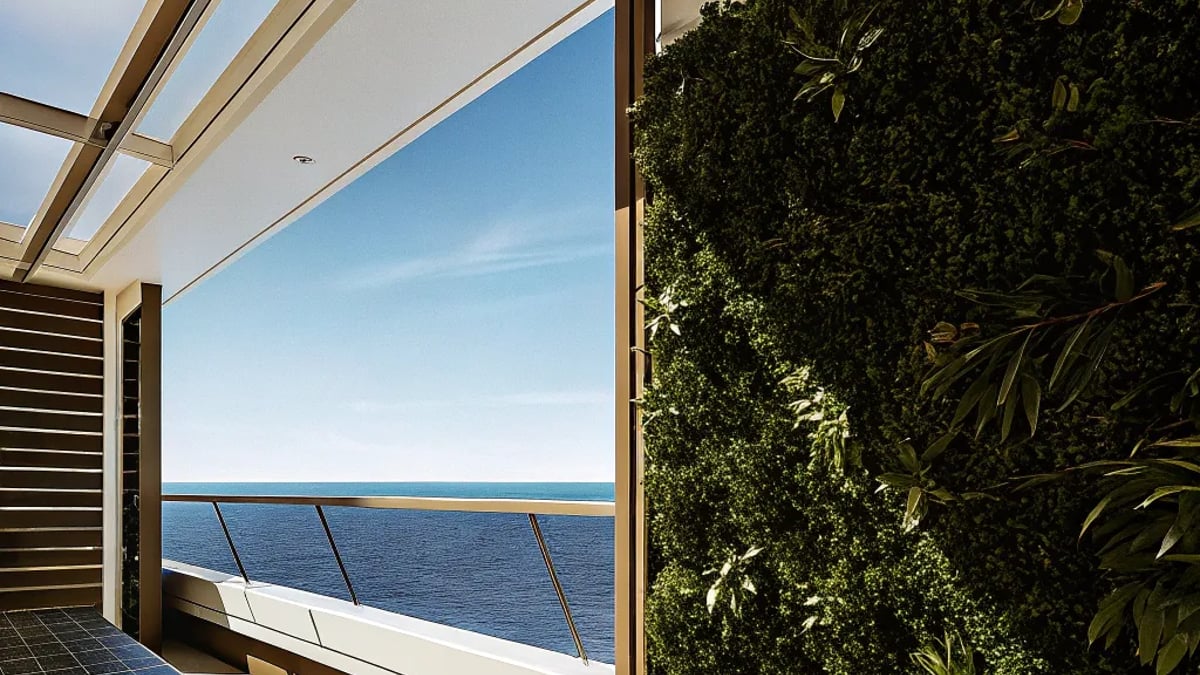
The marriage of environmental consciousness with opulent luxury has created a new class of travel experience at sea. Today's elite eco-luxury cruise suites offer more than just extravagant amenities—they deliver once-in-a-lifetime experiences while minimizing environmental impact. These floating palaces combine sustainability with the kind of lavish accommodations that would make even the most seasoned travelers catch their breath.
The Evolution of Eco-Luxury at Sea
The concept of luxury cruising has undergone a remarkable transformation in recent years. Gone are the days when luxury simply meant excess and environmental considerations were an afterthought. Today's most exclusive cruise lines have embraced sustainability as a core element of their luxury offering.
Scenic Eclipse, often referred to as "The World's First Discovery Yacht," exemplifies this evolution. At 168 meters long, this vessel houses just 114 suites for 228 guests across five decks, creating an intimate experience that stands in stark contrast to the mega-ships carrying thousands of passengers. The limited capacity isn't just about exclusivity—it's a deliberate choice to reduce the environmental footprint per passenger while enhancing the guest experience.
"The luxury cruise industry realized that their most discerning clients were increasingly concerned about environmental impact," explains marine tourism expert Eliza Greenwood. "These travelers want indulgence without guilt, which has driven remarkable innovation in sustainable luxury."

This shift toward eco-conscious cruising doesn't mean sacrificing comfort. In fact, the opposite has occurred—sustainability and luxury have become intertwined in ways that enhance both.
Technological Marvels Behind the Glamour
What makes today's eco-luxury vessels truly remarkable is the cutting-edge technology beneath the polished surfaces and plush interiors.
The most advanced ships now feature dynamic positioning systems that allow them to "hover" over sensitive marine environments without dropping anchor, preventing damage to delicate ocean ecosystems. Hybrid propulsion systems combine traditional engines with electric motors, significantly reducing emissions while cruising in pristine areas.
Water management has also seen dramatic improvements. The Scenic Eclipse, for example, treats 100% of its wastewater onboard and uses advanced filtration systems that produce drinking water that exceeds the quality found in many major cities.
"These ships are essentially floating smart cities," says naval architect Martin Chen. "The technology required to maintain six-star luxury while minimizing environmental impact is incredibly sophisticated—much of it wasn't even available a decade ago."

Inside the World's Most Exclusive Eco-Suites
The crown jewels of these sustainable vessels are their ultra-premium suites, which redefine maritime luxury while incorporating eco-friendly design principles.
Scenic Eclipse: The Owner's Penthouse Suite
The 195-square-meter Owner's Penthouse Suite aboard the Scenic Eclipse represents the pinnacle of sustainable luxury at sea. Floor-to-ceiling windows offer panoramic views of Antarctica's ice formations or the Galápagos Islands' volcanic landscapes, depending on your itinerary.
The suite features handcrafted furniture made from sustainably harvested timber, walls adorned with natural materials, and fabrics created from recycled ocean plastic that feel as luxurious as the finest conventional textiles. The bathroom offers a steam shower and therapeutic tub with chromotherapy lighting that adjusts based on your mood.
A dedicated butler service is available 24/7, and guests enjoy priority booking for the ship's two helicopters and submarine—yes, actual helicopters and a submarine—for exclusive exploration of remote polar regions.
The most impressive feature might be what you don't notice: the suite's climate system uses advanced heat recovery technology that maintains perfect temperature while using a fraction of the energy of conventional systems.
Ecoventura's Evolve: The Panorama Suite
For those seeking more intimate experiences, Ecoventura's Relais & Châteaux yacht Evolve offers the Panorama Suite, a masterclass in sustainable luxury in the Galápagos Islands. This boutique vessel carries just 20 passengers, creating an experience that feels more like a private yacht than a cruise ship.
The Panorama Suite features locally sourced materials, including volcanic stone accents and furniture crafted by Ecuadorian artisans. The suite's design maximizes natural light, reducing electricity usage while providing stunning views of the islands that inspired Darwin's theory of evolution.
What truly sets this experience apart is the unparalleled access to the Galápagos ecosystem. The Evolve's small size allows it to visit islands and coves inaccessible to larger vessels, and the ship's certified naturalists provide personalized guidance that deepens guests' connection to this unique environment.
"Our guests don't just want luxury—they want meaningful experiences in pristine environments," says María Córdova, Ecoventura's sustainability director. "Our challenge was creating suites that honor both the luxury our guests expect and the environmental responsibility the Galápagos demands."
Why Are These Suites So Expensive?
The price tags attached to these exclusive eco-suites often reach into five figures per night, raising an obvious question: What justifies such astronomical costs?
The answer lies in the extraordinary combination of factors that make these experiences possible:
- Limited capacity: With some vessels carrying fewer than 25 suites, the economics of operating a full-service luxury vessel with such limited passenger revenue drives prices upward.
- Specialized staff: These ships maintain nearly 1:1 staff-to-guest ratios, with highly trained specialists including naturalists, marine biologists, and expedition leaders on top of traditional luxury hospitality staff.
- Remote operations: Operating in polar regions or protected areas like the Galápagos requires specialized equipment, permits, and operational procedures that dramatically increase costs.
- Sustainable technology: The advanced environmental systems that minimize ecological impact are significantly more expensive than conventional maritime technology.
- Exclusive access: These vessels can reach locations inaccessible to larger ships or land-based travelers, creating truly unique experiences.
A night in one of these suites isn't merely paying for accommodation—it's investing in an unreplicable experience that combines extreme comfort with access to the world's most pristine and protected environments.
The Carbon Question
Despite advances in sustainable technology, the carbon footprint of luxury cruising remains a legitimate concern. The most progressive cruise lines now address this directly through comprehensive carbon offset programs.
White Desert, which operates luxury experiences in Antarctica (though not technically a cruise line), has pioneered a fully carbon-neutral operation. Their model of comprehensive offsetting combined with continuous reduction of operational emissions has influenced maritime operators.
"The reality is that even the most efficient vessels produce carbon emissions," acknowledges environmental consultant Dr. Samantha Wells. "The leading operators now build carbon offsetting into their pricing structure rather than treating it as an optional extra."
These offset programs typically invest in renewable energy projects, reforestation initiatives, and community-based conservation efforts that sequester carbon equivalent to the emissions produced by the cruise operation.
The Future of Sustainable Luxury Cruising
The eco-luxury cruise sector continues to evolve rapidly, with several innovations on the horizon that promise even more sustainable experiences without compromising luxury.
Hydrogen Power
Several major cruise operators have announced plans for hydrogen-powered vessels that would produce zero emissions beyond water vapor. While still in development, these ships represent the holy grail of sustainable cruising—luxury without environmental compromise.
Regent Seven Seas, already known for its all-inclusive luxury approach, has invested heavily in hydrogen propulsion research, aiming to launch the first hydrogen-powered luxury vessel by 2027.
Biophilic Design
The next generation of luxury suites will incorporate biophilic design principles that go beyond aesthetics to create spaces that enhance well-being through connection with nature. Living walls, natural ventilation systems, and circadian lighting that mimics natural daylight cycles are already appearing in prototype suite designs.
Immersive Conservation
Beyond merely minimizing environmental impact, future eco-luxury cruises will likely incorporate active conservation work into the guest experience. Some operators already offer opportunities to participate in scientific research or conservation initiatives, but this aspect will become increasingly sophisticated.
"The future of luxury is regenerative, not just sustainable," predicts travel futurist Elena Mikhailova. "The most exclusive experiences will be those that leave destinations better than they found them, with guests as active participants in that improvement."
How Can You Experience These Eco-Luxury Suites?
If you're intrigued by these extraordinary accommodations, be prepared for both sticker shock and limited availability. The most exclusive suites are often booked a year or more in advance, particularly for prime seasons in popular destinations.
Booking Strategies
Working with a specialized luxury travel advisor remains the most effective way to secure these experiences. These professionals often have allocation agreements with cruise lines that give their clients priority access to limited inventory.
For the truly exclusive experiences—like the Owner's Penthouse Suite on the Scenic Eclipse during the Antarctic summer—booking 18-24 months in advance is not uncommon.
"These aren't impulse purchases," explains luxury travel advisor Jonathan Alder. "My clients planning these journeys view them as life milestones, not merely vacations. We often spend months crafting the perfect itinerary."
What's Included?
One advantage of these ultra-premium experiences is their comprehensive nature. Unlike conventional cruising with its notorious upselling, the most exclusive eco-luxury cruises typically include:
- All fine dining and premium beverages
- Expedition activities including helicopter and submarine excursions
- Expert guides and naturalists
- Custom-tailored excursions
- Spa treatments and wellness programs
- Carbon offsetting for the entire journey
- Private transfers and often pre/post-cruise luxury accommodations
When comparing prices, this all-inclusive approach must be considered—there are virtually no additional costs once the journey begins.
Is Eco-Luxury Cruising Really Sustainable?
This question deserves honest examination. Can a mode of travel that caters to a tiny fraction of the world's wealthiest people truly claim environmental virtue?
The answer is nuanced. While these vessels implement impressive environmental technologies and practices, they still consume significant resources to deliver their luxurious experiences. However, they also drive innovation that eventually benefits the broader maritime industry.
"The sustainability technologies pioneered in the luxury sector often become standard features across the industry within a decade," notes maritime sustainability expert Dr. James Peterson. "These ships serve as floating laboratories for innovations that will eventually reduce the environmental impact of all maritime travel."
Perhaps most importantly, these experiences create powerful advocates for environmental protection. When influential individuals witness the beauty of pristine environments firsthand, they often become passionate supporters of conservation efforts.
As Scenic Eclipse expedition leader Jason Armstrong puts it: "I've seen CEOs and business leaders transformed by witnessing Antarctica's fragile beauty from our submarine. They return home as vocal advocates for climate action and ocean conservation. That impact ripples far beyond our small passenger count."
The Ultimate Question: Are They Worth It?
For those fortunate enough to consider these extraordinary experiences, the value proposition extends far beyond luxury accommodations. These journeys offer access to the world's most remote and pristine environments in a manner that minimizes impact while maximizing comfort and educational opportunities.
"You're not paying for a room—you're investing in memories and experiences available nowhere else on Earth," says travel writer Sophia Chen, who experienced the Scenic Eclipse's Antarctic voyage last year. "Watching penguins from your private balcony while sipping champagne in the morning, then exploring underwater ecosystems in a submarine in the afternoon—these are experiences beyond price for those who truly value them."
The exclusivity of these experiences ensures they remain the domain of the very wealthy, but their influence extends far beyond their limited passenger lists. By demonstrating that luxury and sustainability can coexist—even enhance one another—these floating palaces are helping reshape our understanding of what truly constitutes luxury in the 21st century.
For the rest of us, these extraordinary vessels offer a glimpse of what's possible when innovation, environmental consciousness, and the pursuit of excellence converge—even if we're just admiring them from afar.
Tags

About Clara Van der Walt the Author
Clara Van der Walt is a seasoned connoisseur of the high seas, renowned for her expert insights into luxury cruises. With over a decade of experience exploring the world's most opulent liners, Clara has a keen eye for curating exclusive seafaring experiences that pamper and inspire.
Recommended Articles
The 2026 Wellness Checklist (No Hype, Just Health)
Discover practical tips in the 2026 Wellness Checklist for balanced physical and mental health. No hype, just health!
2026 Nissan Terra: Rugged Power Meets Modern Comfort
Discover the 2026 Nissan Terra, blending rugged strength with modern comfort. Perfect for families and adventure seekers alike.
2026 Subaru Forester Premium: Comfortable and Ready for Adventure
Discover the 2026 Subaru Forester Premium, an SUV combining comfort and adventure readiness for families and explorers alike.
A Guide to Cutting the Cord and Switching to Streaming
Discover how to cut the cord and transition from cable to streaming with our comprehensive guide, including tips on platforms and budgeting.
9 Rare Creatures Caught on Trail Cameras That Will Shock You
Discover nine astonishing rare creatures caught on trail cameras, showcasing the hidden wonders of wildlife and the surprising moments they reveal.




